It’s July and I’m back to share another update on my 2017 planner lineup! Like last year, I started 2017 with multiple planners—one for work, blog/YouTube content, personal/family, and on-the-go. By mid-year (sometimes sooner!), many plannernerds have either significantly tweaked or abandoned their planning systems to try something new while others continue to press on with the planner they started with. Regardless of your situation, mid-year is the perfect time to do a ‘reality check’ to see what’s working, what’s not working, and make any adjustments going forward. This week we’ll take a look at my primary planner which is my main ‘life’ planner for managing personal, family, home, finances, fitness, and projects. As the ‘central hub’ of my planning system, it’s critical that THIS particular planner works and works well so is my 2017 primary planner still effective? Why or why not?
Previously, I shared an update on my 2017 work planner (bullet journal) and on-the-go planner (Hobonichi Weeks). This week’s update is for my primary planner which I use to keep track of all details for personal, family, home, finances, fitness, and projects.

(*Note: Included below are some affiliate/referral links to help you find items I’ve purchased, use, and love!)
Primary Planner
Below is a quick overview of how I originally setup my 2017 primary planner:
- Planner setup: Inkwell Press Classic A5 inserts ($10 off first purchase, min $50 with referral link) in a Van der Spek A5 leather ring binder; around March 2017, I switched over to the Jibun Techo Mini aka ‘B6 Slim’ Japanese planner (purchased on eBay) housed in a travelers notebook (I swap the cover depending on my mood—currently, it’s a Foxy Fix Boss Babe No. 5 in Moonlit)
- Planning system: yearly overviews, monthly overviews, vertical week on two pages with a Monday start and more!
- Planning supplies: Fine nib fountain pen (whatever is inked at the moment—currently Pilot Custom 74 inked with Diamine Red Dragon), Pilot Hi-Tec-C Coleto Lumio 4-color pen (for color coding—purple, orange, turquoise, and green), Book Darts (for bookmarking pages and marking the current day), Midori cat clips (for bookmarking specific pages, they stick a little making it easy to flip to)
To see my original setup of the Inkwell Press Classic A5 inserts and learn why it didn’t work for me as well as see a setup and walk-thru of how I’m using my Jibun Techo planner, check out my YouTube video Jibun Techo Mini – Functional Plan With Me below:
Yay or Nay?
Of all the planners I use, this is THE most important one managing all details—appointments, tasks, notes, reference information, etc.—for me and my family. They’ve come to know that “if it’s not in mom’s planner, it won’t get done!” My preferred layout for a primary planner is a vertical, week on two pages with a Monday start, the weekends separated out into two equal size columns, and an extra blank column for weekly tasks that are not date specific. In addition, I’m a fountain pen user so the quality of the paper is equally important.
Last year, I used the Inkwell Press Classic spiral planner pages—which is their vertical weekly layout—that I uncoiled and hole-punched to put in an A5 ring binder and it worked perfectly as a primary planner. This year, Inkwell Press for the first time is selling their Classic layout as a pre-punched A5 insert which I was really excited to use so, of course, I ordered them. Unfortunately, they made some changes to the Classic layout on the A5 inserts (these pages are smaller than the pages in their spiral planner) which ultimately made it difficult for me to use effectively: the weekends were combined into one column and the extra blank column was removed—ugh!
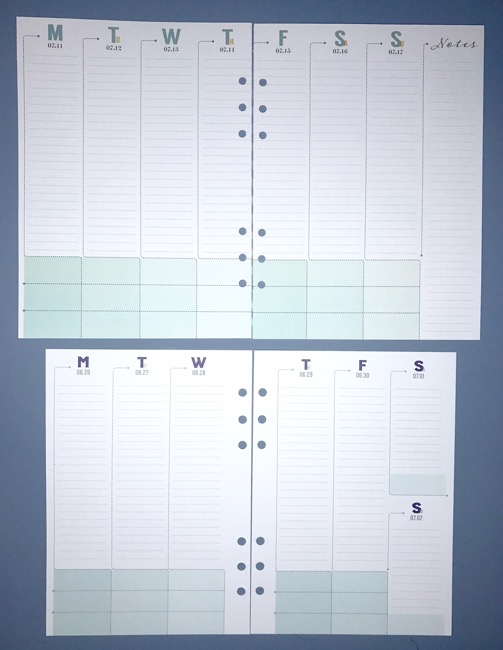
These might seem like minor changes but for me it meant that I didn’t have enough room to record weekend details (I now had less than half the space of the weekday columns) and I didn’t have a place to manage weekly tasks and goals. I did try several ‘hacks’ which I describe in the video above but sadly, they didn’t work for me. Other than that, it’s a great planner with wonderful goal planning trackers, extra note pages, and the paper quality is amazing so I did try to make it work for the first three months of 2017 but it was long before I started looking for another planner. As a result, the Inkwell Press Classic A5 inserts are a ‘nay’ for me. 🙁
Then…one day while browsing YouTube, I stumbled on a video for a Japanese planner I never heard of before called the ‘Jibun Techo’. I’m a big fan of the Hobonichi planners, another Japanese brand—read more about it here and check out my videos here and here—so I was immediately intrigued! My mouth dropped as I saw how this wonderful little booklet had all the layouts I needed (okay, about 98% of what I needed—I wish it had a few extra blank pages in the planner booklet for notes) in a surprisingly compact size.
The Jibun Techo system comes with several items (can also be purchased separately) each of which are designed to help you plan and capture details surrounding all areas of your life (to see them more indepth, check out the description box of my video above for links to some wonderful YouTubers who did excellent, thorough walk-thrus):
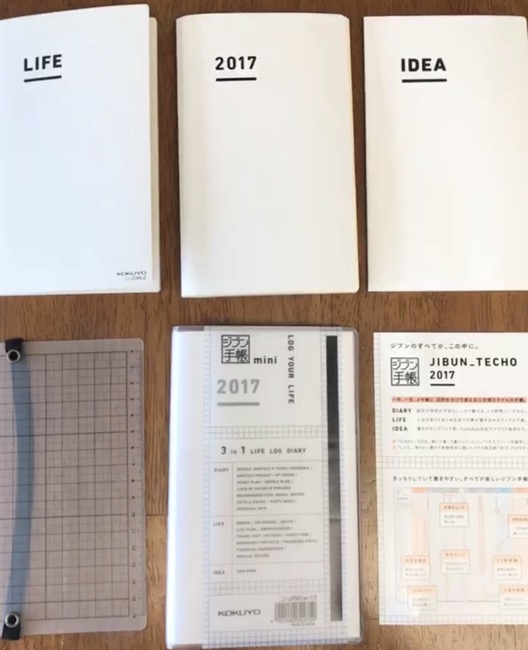
- Compact size (B6 Slim, approximately 4.50” x 7.25”) – check!
- Vertical week on 2 pages – check!
- Monday start – check!
- Separate, equal size weekend columns – check!
- Extra blank weekly column – check!
- Month on 2 pages with extra blank column – check!
- Yearly at-a-glance – check!
- Specialty list pages (e.g. for books, movies, finances, etc.) – check!
- Monthly trackers – check!
- No frills, simple aesthetic with a subdued color scheme – check!
- Comprehensive page layouts to capture lots of different information which could be repurposed, if needed due to the subtle preprinted fonts/icons (Check out the video above for more information) – wow, check!
- Lots of extras: blank page IDEA booklet, LIFE booklet, plastic cover, pencil board with planner band – nice surprise, check!
- Tomoe River paper (very fountain pen friendly) – check! check! check!
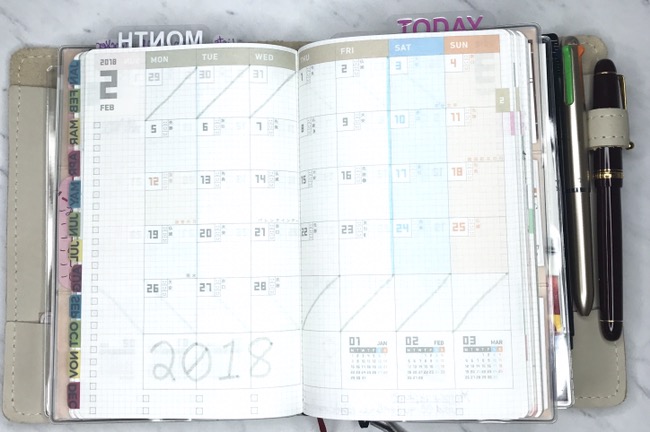
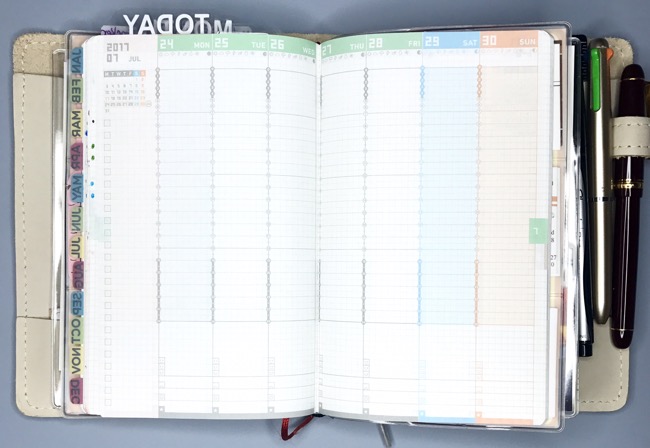
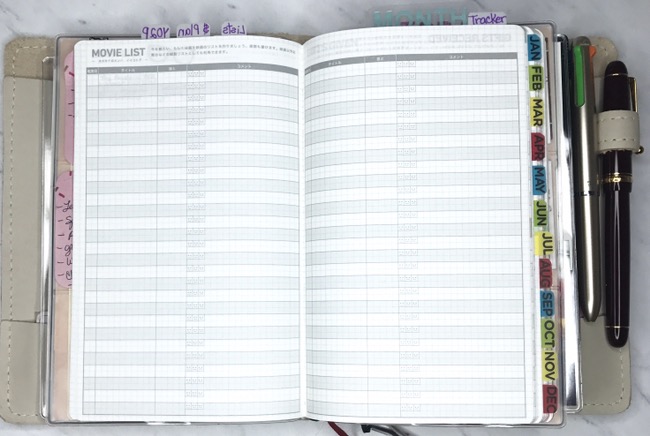
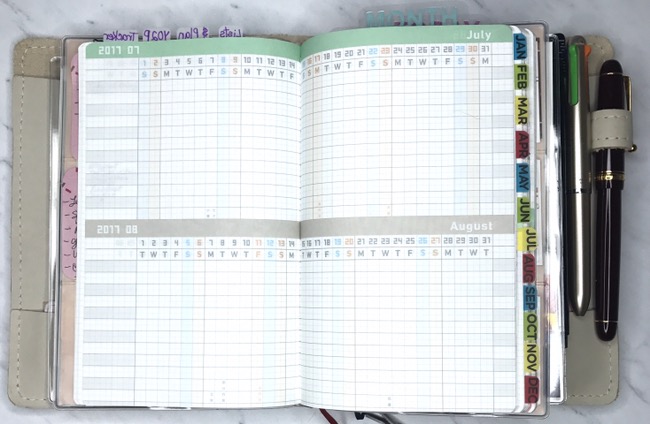
As you can imagine, I jumped into this beauty soon after I received it—around March—and I never looked back! It is so versatile, that I’m also using it as a mini-blog/YouTube planner—I use a larger planner for this so this has become it’s smaller, portable counterpart—and a project planner (again, check out the video above for more information).
Lessons Learned
So what’s the lesson here? To begin with, only YOU know what you truly need to plan effectively so if a planner isn’t working for you, don’t try to force it. If you’ve found the ‘right’ planner, it should work effortlessly and compliment your planning style. If not, then don’t be afraid to look around and if you’re not finding what you’re looking for, design it yourself! Either take a blank sheet of paper and design your own layouts or for a more polished look, open up your favorite word processor or spreadsheet program and design it there.
I’ve come to know what layouts work best for me in a primary planner so now I’m able to quickly scan a myriad of products to determine which I should try and which ones I can pass on. The same goes for my work, blog/YouTube content, and on-the-go planners—I prefer different layouts for each—so that, again, makes it easy for me to quickly screen out what may or may not work. If you’re unsure of your planning style or are overwhelmed by the planner choices on the market, check out my blogpost Planner Overload Series – Where do I Begin? to help identify your basic planning needs and planning style so you can easily find a planner that’ll work best for you!
What about you? Do you use a primary ‘life’ planner? Did you know about or have you tried the Jibun Techo Japanese planner? What are some of your favorite tips and/or hacks for your primary planner and/or the Jibun Techo? Please share in the comments below and don’t forget to like, share and subscribe!
Until next time, 🙂
♥ LilD ♥

1 Comment on 2017 Mid-Year Planner Lineup – Primary Planner Update